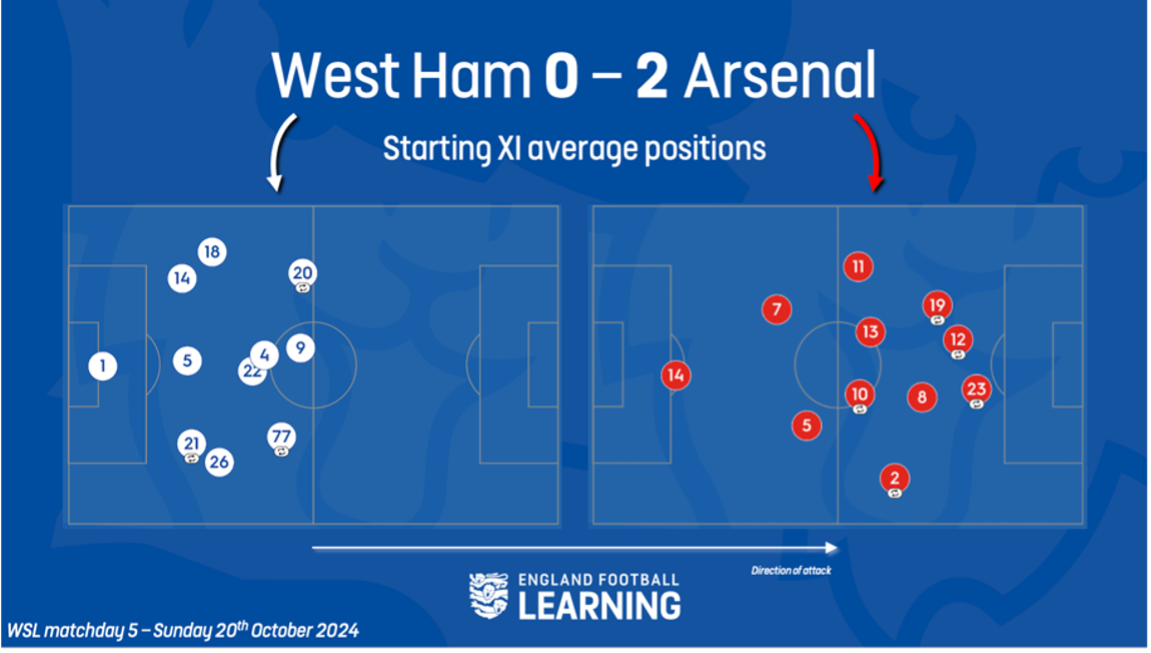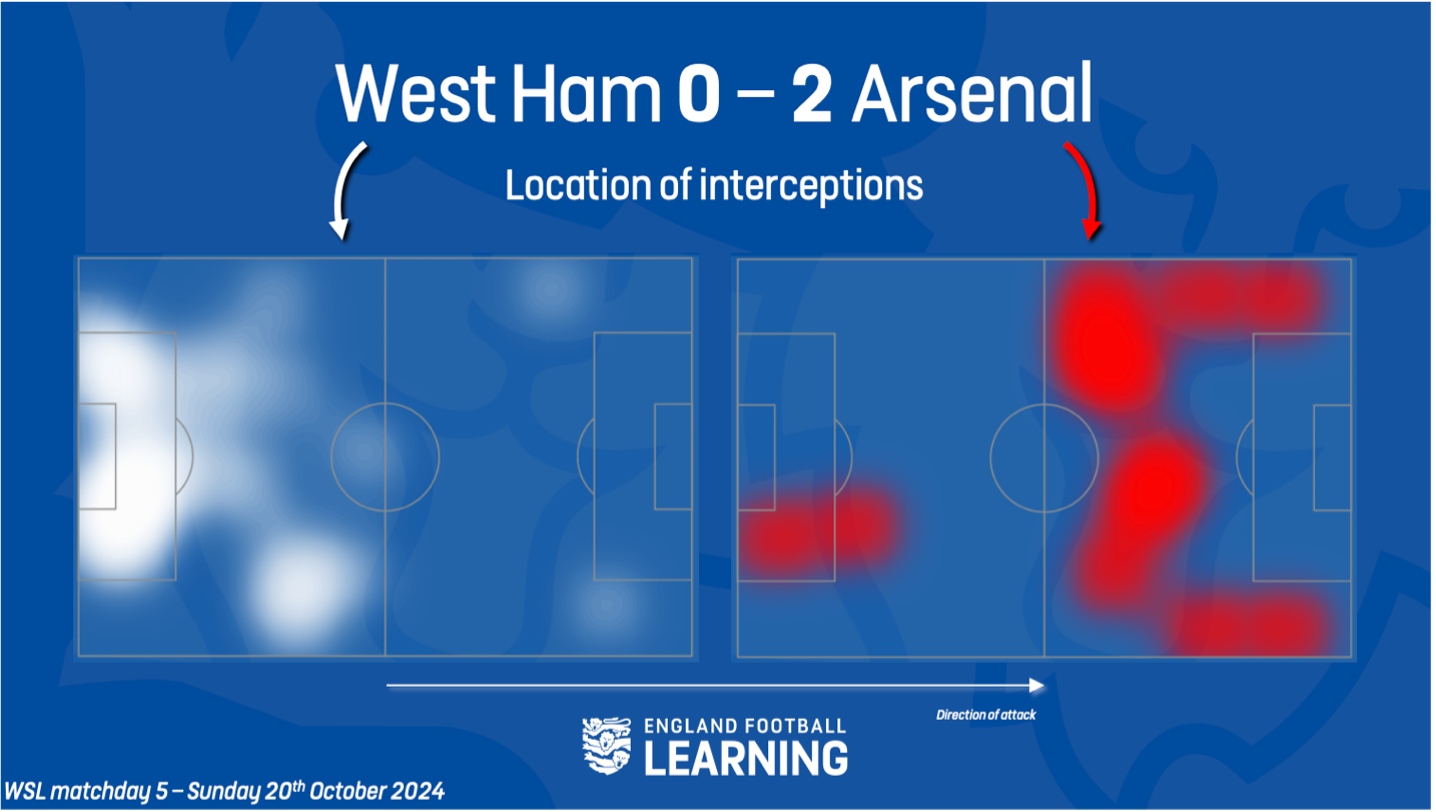Teams base their defending tactics and strategies around the out of possession principles of play but what does it look like on the pitch? Game Insights analyst, Luke Saunders, explores the out of possession principles of play and how they can be used to create an effective defence.
What are the out of possession principles of play?
The principles of play may mean different things across the levels of football, from the local park to a packed-out Wembley stadium, but they play an important role in the quality of a team’s defence and we see them in every game we watch: delaying, compactness, cover & balance, pressing, and control & restraint. These principles are practiced during training sessions and executed during matches to give teams the best chance of neutralising their opponent’s attacking threat, winning the ball back and then going on the attack.
Check out the below clip from Brighton v Arsenal in the WSL to see the out of possession principles of play in action, leading to a goal:
When do they occur?
As you saw from the clip, the principles of play work together and are performed by players – as individuals, as units and as a team. As the game is forever moving and changing, so too are the required principles – when is the right moment to stop the control & restraint and put the ball carrier under pressure? Does our team’s compactness allow the opponents to play around our defensive shape too easily? When is the right moment to delay and which players should be providing cover & balance?
Decision-making, individual tactics, strategies, systems and core skills all play a large role in the out of possession principles of play and feature in every game. To see the principles in action more closely, let’s look at West Ham United 0 – 2 Arsenal from the WSL (matchday 5, Sunday 20th October).
West Ham v Arsenal case study – WSL matchday 5
A look at each team’s starting XI’s average positions helps to paint an out of possession picture:
- Arsenal (on the right, red) have a compact shape in the middle of the pitch, keeping a small distance between midfielders (#13, #10, #12,) and attackers (#19, #8, #23); central defenders (#7, #5) supply cover at the back by supporting both their respective central midfielder (#13, #10) and full back (#11, #2) by positioning themselves in between them.
- West Ham (on the left, white) show compactness between their wide centre backs (#14, #21) and their respective full backs (#18, 26) but it is disjointed so has left space in front of and around the central centre back (#5); the gaps continue between the front 3 (#20, #9, #77) and the central midfielders (#4, #22)are too narrow to supply any cover or balance behind the attackers.

Arsenal’s out of possession masterclass meant that even though they had double the amount of possession they had a similar number of interceptions (41) to West Ham (46). The majority of these came in the central, compact zone of Arsenal’s shape.
Arsenal’s higher average positions also meant that they recovered the ball in their opponent’s half 5x more than West Ham (47 for Arsenal, 9 for West Ham).

In the following clips, you will see the out of possession principles of play in action. The 1st video shows Arsenal pinning West Ham to the touchline, pressing intensely with a very compact shape. The full back steps up to provide cover behind the pressing unit. This coordination leads to Arsenal regaining possession in the final 3rd.
The 2nd video shows Arsenal’s ability to show control & restraint whilst the opposition have the ball. They wait for triggers before applying the press. Arsenal's desire to force West Ham into making mistakes leaves space in behind for West Ham to exploit in behind. However, the covering defender has been able to read the danger well, playing the West Ham attacker offside.
The 3rd video highlights all of the principles – Arsenal delay their opponent by cutting off passing lanes from the centre back into the midfielder; they initiate the press once the ball goes wide; the pressing group become compact in their shape to force a turnover; the midfielder covers behind the pressers, ready to intercept any forward passes; for all of this to be effective, the players need to know their roles, the triggers and show control & restraint throughout to activate their responsibility at the right moment.
Coaching considerations
- How can coaches support their players’ understanding of the out of possession principles of play?
- What do the principles look like for different age groups, levels of football, etc.? How can we use different pitch geography to our advantage when practicing the out of possession principles of play?
- How can we provide different players in the team with different roles & responsibilities? What practice sessions can we design to help our players perfect their principles of play?
Want more?
Further resources:
- Article – What are the principles of football?
- Sessions – Practice sessions to try
- Blog – Crafting the attack: The in possession principles of play
- How we play – Out of possession – England DNA resource


